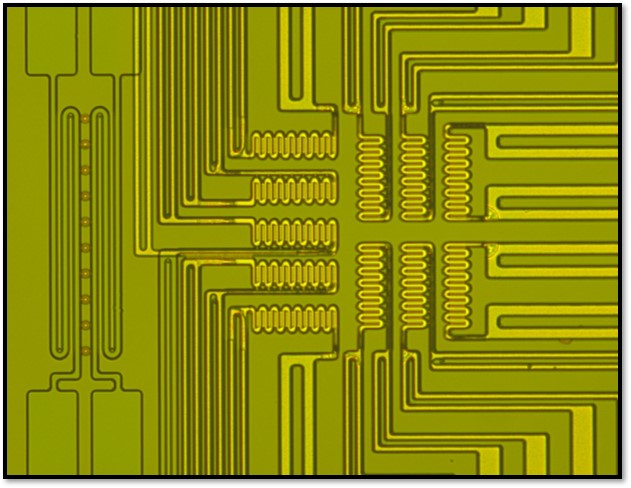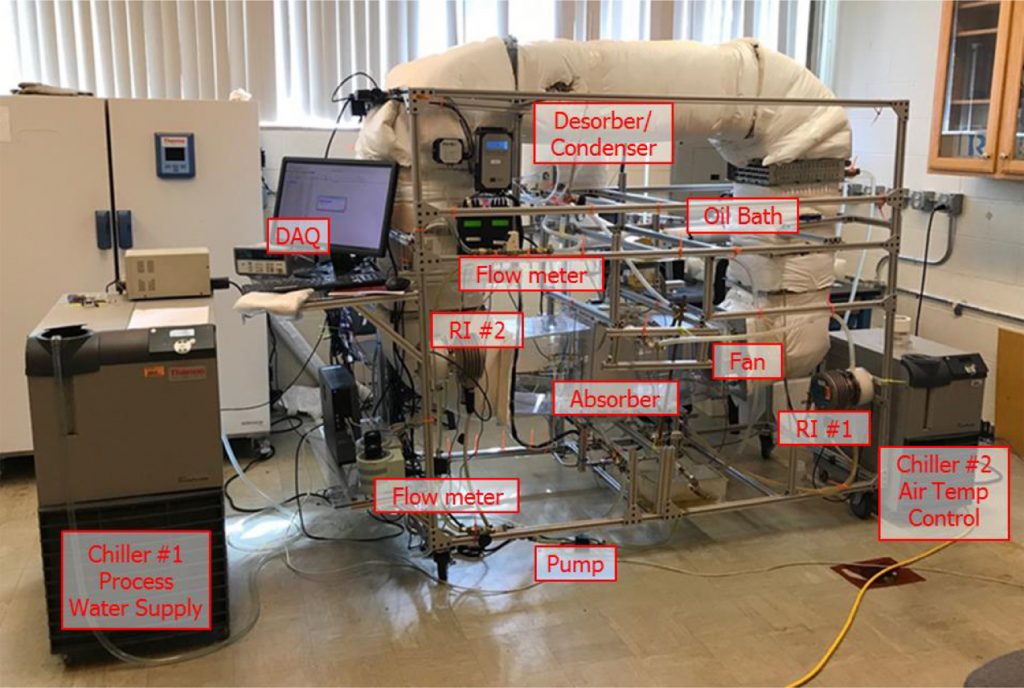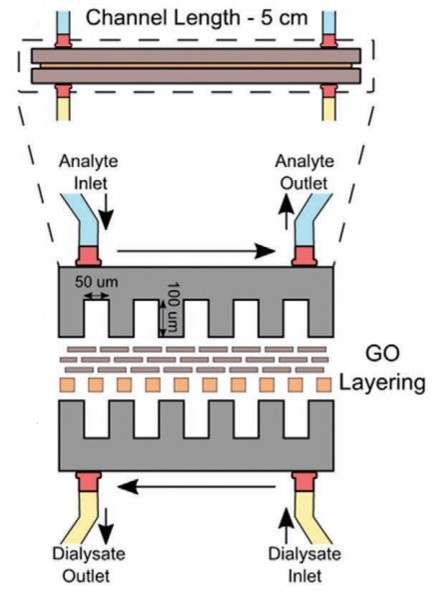Microchannel Heat Transfer

As the use of microscale energy systems are integrated into more fields, the need to predict and model their performance is increasingly critical. Thermal management using two-phase flow is often used for its enhanced heat transfer capabilities. These capabilities can vary greatly due to the strong coupling of complex fluid motion and heat transfer at the microscale level. Here, we investigate the impacts of flow regimes, gravitational force, phase change, and flow confinement on mechanisms of heat transfer and develop predictive correlations for two-phase flow boiling in microchannels. Using microfabrication to develop multilayer microscale sensor arrays, we can directly observe and analyze these flows to characterize their performance. Knowledge gained under this research will contribute to enhanced design models for microelectronics in a wider variety of applications, from satellite technology to data center cooling. Sponsor: Office of Naval Research (ONR)
Understanding and enhancing Critical Heat Flux during boiling
Boiling is a common mechanism of heat transfer that has numerous applications ranging from cooling and refrigeration systems used in most buildings to large boilers used in energy and process industries. The performance of boiling heat transfer is limited by a phenomenon commonly known as the critical heat flux. Critical heat flux is the highest heat flux a heater can exchange with a boiling fluid before the formation of a vapor layer isolates the surface from the liquid. This research project aims to address fundamental physical questions about the nature of critical heat flux. The fundamental knowledge and theories generated under this work serve as major validation thresholds in boiling science that can facilitate development of next generation two-phase systems with a drastically improved performance. Outcomes of this research could potentially benefit many applications in which thermal management is a limiting factor, such as X-band radars, laser diodes, semiconductor-based power transformers, data centers and more reliable, compact nuclear reactors. Sponsor: National Science Foundation
Ionic Liquid based Absorption system

Vapor compression cooling technology has greatly benefited modern civilization. However, its performance is fundamentally limited due to its reliance on moisture removal through condensation on the system cooling coil. In hot and humid climates, the environmental impact associated with reducing the air humidity is often greater than reducing the air temperature. Absorption systems using liquid desiccants can directly absorb moisture from air because of their hygroscopic nature. This eliminates the need for the air to be cooled below its dew point to remove moisture. This provides independent control over latent loads, which reduces the complexity of control systems, provide better indoor air quality, and reduce total energy consumption. Current absorption systems are complex, bulky and inefficient and are mostly limited to high-capacity commercial applications. The primary aim of this project is to develop a high efficiency, compact, ionic liquid-based dehumidification system which can be used for residential and small-scale commercial applications. This would have a huge impact on residential and commercial building indoor air quality whereas substantially reduce its primary energy consumption. Ionic liquid desiccants are environmentally friendly, non-corrosive, and don’t crystallize. This provides an increased system operational envelop and enable enhanced efficiency relative to conventional desiccant systems. Sponsor: Department of Energy
Wearable Artificial Kidney

End-stage renal disease (ESRD) is a chronic illness impacting millions worldwide. A new treatment is needed to enhance the patient’s quality of life, reduce mortality rates, and enhance affordability in the US and globally. We are currently working on developing a truly wearable three-stage system that can artificially recapitulate the functions of a working kidney for dialysis applications. Implementing this proposed three-stage system will have transformative impacts on the healthcare system and the individual patient’s life. The fundamental knowledge gained under this research will also serve as a significant validation threshold for a new renal replacement therapy. Sponsor: National Institutes of Health (NIH)